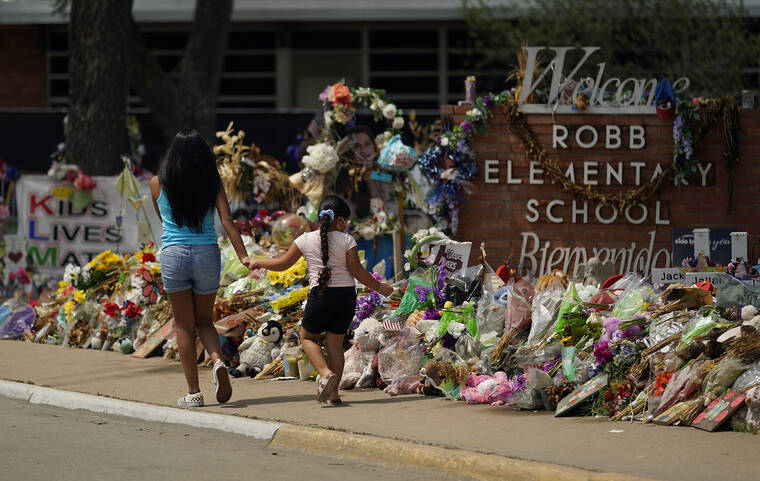Tuesday’s lockdown of three Big Island schools, spurred by reports of a gun threat made by one student against others, sent shivers down our collective spines. Luckily, the tense situation ended without violence several hours later, with a 17-year-old arrested for terroristic threatening, bringing a huge sense of relief.
But the harrowing incident was a dark reminder of recent school shootings on the mainland — of how something horrific could indeed happen here. And that certainly should impel school and security officials to better implement cohesive training and strategies to keep campuses safe.
In a two-part series this week, Star-Advertiser reporter Esme Infante found that while some work is proceeding, it’s uneven. For instance, only 51 of the state Department of Education’s 294 public and charter schools have received “run, hide, fight” training for responding to an active shooter on campus — a program provided to schools upon request. But with demand for the training rising — and frankly, a good idea given today’s realities — the DOE should make this a requirement for all schools.
In a responsible and unprecedented move, the DOE this summer brought together nearly 900 school employees to discuss violence prevention. But it needs to also improve policies on classroom drills and safer-campus inspections: Only 83 “vulnerability assessments” have been conducted to evaluate school facilities, grounds and security.
Last week, the chief of the National Threat Assessment Center came to town to help train 100-plus school leaders from public, private and college campuses. She stressed that prevention efforts are crucial, and that a behavior intervention/threat strategy has been effective in stopping scores of potential violent events in U.S. schools.
Also being tapped is active-shooter training by the Honolulu Police Department, a crucial partner in preventing violence (request free presentations at 808ne.ws/hpdrequest Opens in a new tab). It’s reassuring, too, that HPD and other law enforcement agencies are refreshing training for their rank and file — particularly after the tragic failed response in Uvalde, Texas, where 19 children and two adults were killed at Robb Elementary School in May by a lone gunman.
Learning best practices in bad situations is important — but knowing how to prevent such situations is best, by far. This means intervention strategies and better training to spot warning signs: bullying, online chatter about attacks on others, a fascination with weapons and mass attacks.
While there has been a dramatic rise of school shootings in recent years, no one wants to see campuses turned into armed encampments of fear. Schools must remain safe spaces to educate and nurture.

